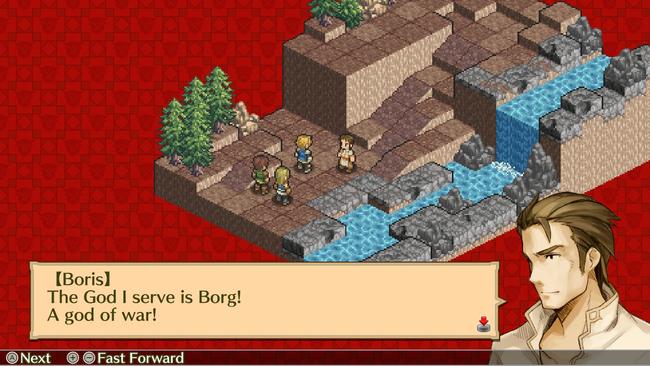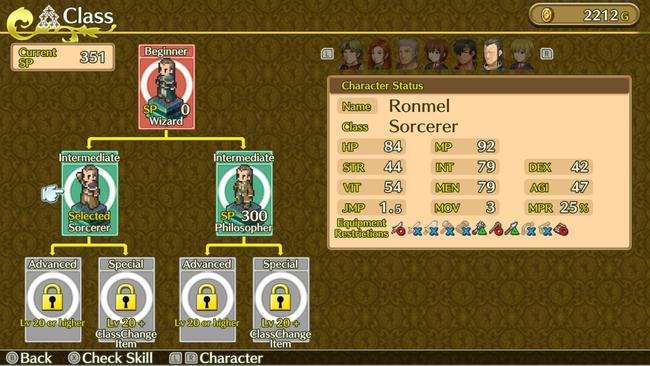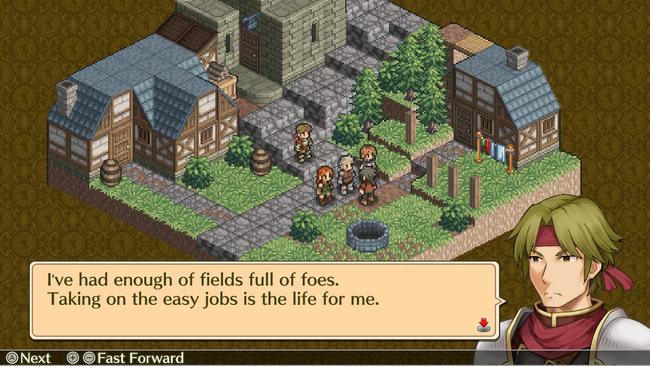Mercenaries Saga Chronicles Review
Currently, there’s not a lot of SRPG offerings on the Switch. While we’re still waiting for new Fire Emblem Switch news and sitting on a port of Disgaea 5, those that have already played NISA’s tactical game on the PS4 have been left with a strategic drought on Nintendo’s console. Circle Entertainment is looking to end that drought, though, with Mercenaries Saga Chronicles, a collection of three strategy RPGs for a budget price. Does these games’ past as mobile titles plague them when Mercenaries Saga makes the move to the Switch, or do these SRPGs stand up to scrutiny?

Before we begin in earnest, it’ll be helpful to explain the series’ history for those that do not know. The Mercenaries Saga titles were originally mobile games that were only released in Japan. However, Rideon decided to port the titles to the 3DS. Circle Entertainment decided to localize the second and third game for English audiences but skipped the first game. Mercenaries Saga Chronicles not only brings the first, unlocalized title to Western audiences but also updates the gameplay of the first two games to be identical to the third title.
Still with me? Let’s talk about the gameplay of the Mercenaries Saga titles. The games are relatively simplistic, borrowing heavily from the likes of Final Fantasy Tactics and Tactics Ogre. Characters move about the grid field, attacking foes and using skills, gaining experience to level up and SP to learn skills and advance classes. The games allow for choices when changing classes—while a character’s initial class is set, each character will get a choice of two classes to advance to at level 10 and then two more third tier classes at level 20, depending on the second class they chose. It allows for a fair amount of customization of your party and can make leveling members that aren’t a part of your main party to have more class variety.

While the game plays very similarly to something like Tactics Ogre, there are a few small mechanics that are worth mentioning that are different from the SRPG norm. First off, party members do not start with a full MP bar at the beginning of battle; instead, they start with a set, low amount and gain MP turn by turn, earning more when a character waits or guards. This may not be immediately important for your offensive characters, but it's a vital mechanic for healers and mages to keep in mind and makes managing the recovery and use of MP a vitally important skill. It adds an extra layer of strategy that wouldn’t exist otherwise. Mercenaries Saga also has a visible “Hate” stat, which rises when characters attack or heal and determines how likely enemies are going to attack them. While an aggro meter isn’t exactly anything new in games, the fact that it’s easily visible is both a bit unusual and helps to plan for a variety of scenarios.
Despite these couple wrinkles, all in all the gameplay in the three Mercenaries Saga games is mostly standard for the genre and doesn’t do much to stand out from its peers. That doesn’t mean that it’s bad, though, not by any means. While a fairly standard gameplay experience means nothing new or exciting is happening, it also means there’s nothing fundamentally broken that can frustrate or impede progress.
Before moving forward I want to talk about the difficulty modes for the Mercenaries Saga titles. You can play the games either on Easy or Normal mode, with the game recommending Easy for first playthroughs. The difficulty affects a number of things, such as whether characters will recover HP at level up, how many turns a KOed party member will stay on the field for revival before retreating, and so on. However, it feels more like Easy would have been named Normal and Normal named Hard, as Normal mode is pretty difficult and requires constant grinding in order to move forward. Easy, on the other hand, feels a bit more fair, and while there were a few points where I stopped to grind characters up when they were lagging in levels, I didn’t need to stop at the end of each chapter to level up my crew.

The main difference between the three Mercenaries Saga titles are the stories, although they all follow largely the same pattern. Will of the White Wolves follows a relatively ragtag mercenary group that eventually gets caught up in a larger conflict. Order of the Silver Eagle begins with trying to find an antidote for a poisoned prince, and in time becomes a more complicated battle for the Kingdom. Grey Wolves of War introduces us to a barely functional mercenary group more or less hired to be disposable bodies in the ongoing war. None of these stories are going to particularly wow anyone, but like the gameplay it’s pretty standard but inoffensive. The plot gives you enough reason to get from chapter to chapter.
Interestingly, the games have decisions you can make, which will change up which maps you’ll end up seeing next chapters, and in some cases even the ending you’ll get. It’s a nice addition to up replayability, combined with branching character classes Mercenaries Saga Chronicles gives you a few reasons to come back to its titles.
Mercenaries Saga Chronicles is a standard experience. It does nothing out of the ordinary for the genre, nor is the story anything to write home about. But on the flip side, the Mercenaries Saga titles don’t do anything particularly wrong, either. If you’re looking for a solid experience that doesn’t go outside of the SRPG box, Circle’s collection will satisfy you.